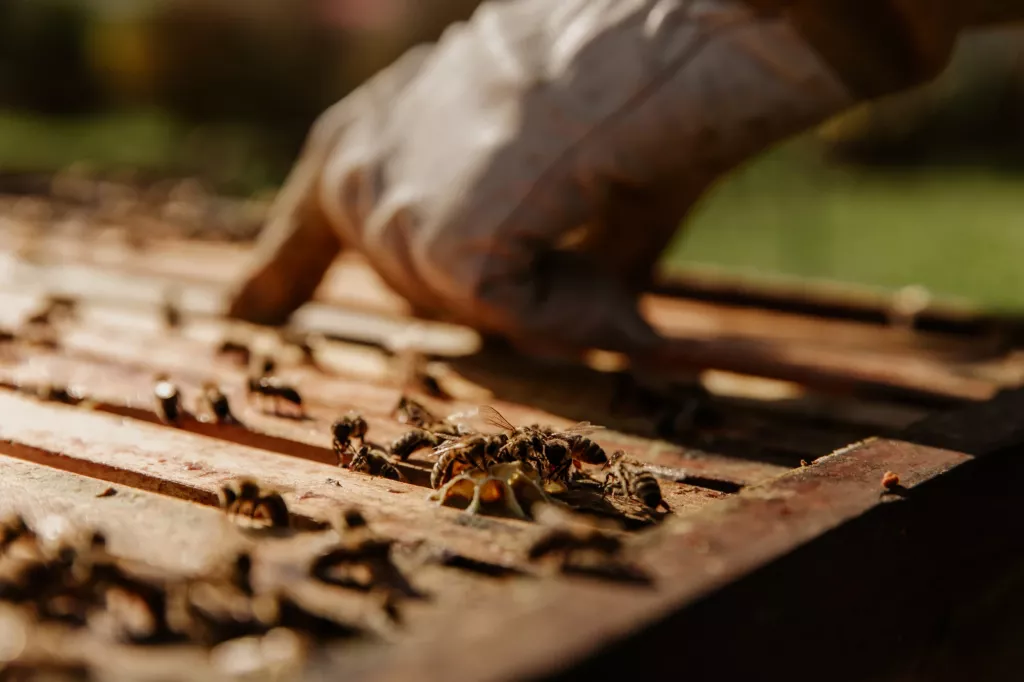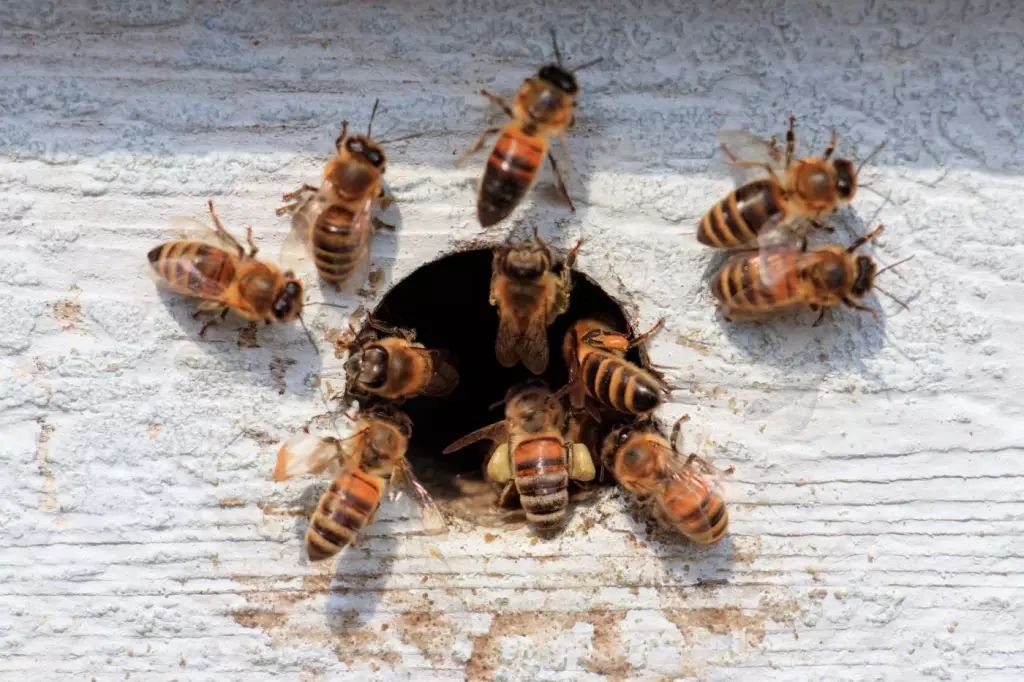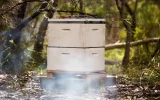How to Keep Wax Moths Out Of Stored Supers
Keep your beehive safe from wax moths with these simple tips. Learn how to identify wax moths, install pheromone traps, use heat treatments, and more to keep your stored supers free of wax moths.
Clean out old comb and wax. Seal up openings in the hive. Place a screen over the hive entrance. Replace supers regularly. Use moth traps with pheromone lures. Spray the hive with diluted essential oils and/or menthol crystals. Freeze combs before storing them. Store supers in a dry, cool, dark area.
Prevent wax moths from entering stored supers by keeping them in sealed containers and monitoring for signs of infestation. Continue reading to learn more.
Summary
- Wax moths are common pests to see on beehives, and there are different ways to detect and keep them out of stored supers.
- Proper storing of supers and using a screen on the hive entrance are some of the ways to keep wax moths out.
- Mothballs, pheromone traps, and suitable insecticides can be used to prevent wax moths.

Keep Wax Moths Out of Stored Supers
Wax moths are a common pest found in beehives and can cause serious economic damage to stored supers. They are attracted to stored supers that have been left unattended for a while and can quickly lay eggs and create larvae that feed on the wax comb and stored honey.
Proper storage
When storing supers filled with honey for the winter, it is important to take steps to prevent wax moths from infesting the hive. Wax moths are small, grayish moths that feed on the wax and honey of beehives and can cause significant damage if left unchecked. To help prevent wax moths from infesting stored supers, the following steps should be taken:
-
Ensure that the supers are clean and free of honey before storing them. Wax moths are attracted to the smell of honey, and any remnants of honey left in the stored supers will attract them.
-
Place the stored supers in a dry and well-ventilated area. Wax moths thrive in damp environments, so keeping the supers in a dry and well-ventilated area will help to reduce the chance of wax moth infestation.
-
Store the supers in a sealed container such as a plastic bin or cardboard box. This will help to keep them free from pests, debris, and other potential damage.

Using the screen on the hive entrance
Placing a screen over the hive entrance is an effective way to keep wax moths out of stored supers. The screen should be made of fine mesh that is at least 1/8 inch in size. This will allow air to flow through the hive while preventing the moths from entering.
The screen should be securely attached to the outside of the hive entrance and should cover the entire area. If any damage is found, the screen should be replaced immediately to keep the moths out.
Mothballs or bay leaves
Mothballs and bay leaves are great natural ways to help deter wax moths from stored supers. Placing them in the supers can help to keep wax moths away and protect your honey stores. Mothballs contain chemicals such as naphthalene and paradichlorobenzene that are toxic to wax moths, while bay leaves contain essential oils that are also toxic to wax moths.
To use mothballs, simply place a few in each super and close it up. To use bay leaves, place a few in each super and secure the lid. Both mothballs and bay leaves can be replaced every few months to ensure that the smell remains strong, and the wax moths stay away.

Regular inspection
Supers should be inspected regularly for signs of wax moths and larvae, and any infested supers should be removed and disposed of immediately. Beekeepers must be diligent in the inspections of their supers for signs of wax moths. Inspecting the supers regularly is the best way to detect any signs of wax moths.
Once a beekeeper notices signs of wax moth infestation, the affected supers must be removed and disposed of immediately. If the infestation is not controlled, the wax moths can spread quickly, leading to the destruction of other supers.
Using pheromone traps
The use of pheromone traps can be used to monitor and detect wax moths in stored supers. These traps contain a pheromone attractant that will lure the adult moths and trap them within the container.
Pheromone traps use synthetic pheromones to attract wax moths, which are then captured in a sticky substance within the trap. This allows beekeepers to detect wax moth populations before they become too large, allowing for early intervention and control. The traps should be placed near stored supers and regularly monitored for signs of wax moth activity.
Insecticide usage
In serious cases of wax moth infestation, an insecticide can be used to control the population. However, this should only be used as a last resort as it can be hazardous to the bees in the supers. Use a suitable insecticide or pesticide to treat the stored supers. Products such as pyrethrin or permethrin are effective at killing wax moths.
Pyrethrin is a natural insecticide derived from chrysanthemum flowers. It is an effective insecticide that kills wax moths, as well as other insects that can infest stored supers. Pyrethrin is a broad-spectrum insecticide, meaning it can effectively kill a variety of insects. It is also relatively safe for humans and the environment, and it breaks down quickly, making it a good choice for beekeepers looking to avoid long-term residual effects.
Permethrin is a synthetic insecticide that is derived from pyrethrin. It is a powerful insecticide that is effective at killing wax moths and other pests. It is more toxic than pyrethrin, and it has longer residual effects, so it should be used with caution.
No matter which insecticide you choose to use, it is important to follow the application instructions carefully.

Spray oils and crystals
Spray the hive with diluted essential oils and/or menthol crystals. The oils and crystals act as an effective repellent, creating an environment that wax moths find unpleasant and will avoid.
To use this repellent method, a beekeeper should mix a solution of diluted essential oils or menthol crystals in water, in a ratio of one tablespoon of either per gallon of water. This solution should then be sprayed onto the stored supers and surrounding area.
The solution should be applied liberally and evenly, and the beekeeper should take care to ensure that all exposed surfaces of the supers are covered. The solution should be reapplied every few weeks to ensure that it remains effective.
It is important to note that this method will only work on stored supers, and will not prevent wax moth infestations in an active hive. If wax moths are present in an active hive, they must be dealt with using other methods such as baiting or trapping.
Wax Moths on Stored Supers
Wax moths (Galleria mellonella) are a common pest of stored honey supers and wax foundations. They can damage combs and foundations with their larvae feeding on the wax, making it difficult to reuse the combs and foundations.
Wax moths can also contaminate the honey stored in the supers with their frass, which is the fecal matter of their larvae. This can cause the honey to become unpalatable and unusable as human food. Wax moths can also spread diseases and parasites, such as the European foulbrood, among the hives, which can lead to the destruction of an entire colony.

